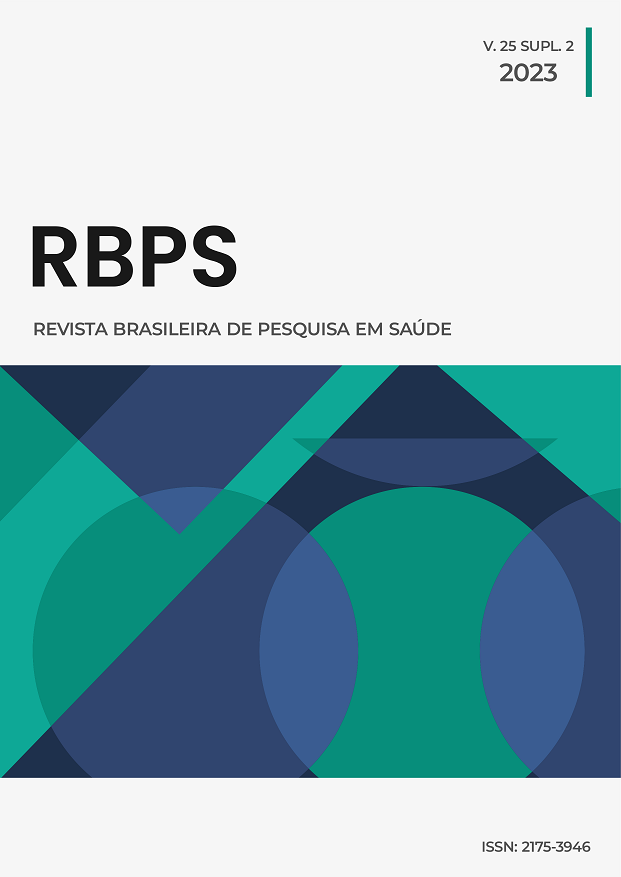Pancreatite de sulco: uma breve revisão de literatura
DOI:
https://doi.org/10.47456/rbps.v25isupl_2.40996Palavras-chave:
Pancreatite de sulco, Pancreatite crônica, Adenocarcinoma pancreático, Pancreatite paraduodenalResumo
Introdução: A pancreatite de sulco é um tipo raro de pancreatite crônica que acomete um espaço virtual chamado sulco pancreático. A etiologia exata ainda é desconhecida, porém possui forte associação com etilismo e tabagismo. Sua apresentação clínica e radiológica é semelhante ao adenocarcinoma pancreático, tornando-se um diagnóstico diferencial importante. Objetivos: Revisar e descrever as características clínicas, radiológicas e anatomopatológicas que permitam ao médico obter conhecimento sobre essa doença rara. Métodos: Revisão sistemática da literatura. Resultados: A pancreatite de sulco é mais frequente em homens, de 40 a 50 anos, com emagrecimento, dor abdominal e sinais de obstrução duodenal. As imagens radiológicas mostram lesão sólida que ocupa o espaço entre o duodeno e o pâncreas, mimetizando uma neoplasia. Na endoscopia observa-se como lesão infiltrando o duodeno, espessamento e cicatrização da parede duodenal, associado a estenose e formações císticas. A anatomopatologia mostra células estromais fusiformes, células espumosas e restos celulares na forma granular. Conclusão: A pancreatite de sulco é uma doença rara e desconhecida por parte da equipe médica. O diagnóstico é possível com uma análise multidisciplinar de suas características clínicas, radiológicas e anatomopatológicas, evitando abordagens cirúrgicas mais invasivas.
Downloads
Referências
Karyn DeSouza, MD; Laurentia Nodit, MD. Groove pancreatitis. A Brief Review of a diagnostic Challenge; Arch Pathol Lab Med. 2015; 139:417-421.
Potet F, Duclert N. Cystic dystrophy on aberrant pancreas of the duodenal wall. Arch Fr Mal App Dig. 1970; 59(4):223–238.
Stolte M, Weiss W, Volkholz H, Rosch W. A special form of seg- mental pancreatitis: ‘‘groove pancreatitis.’’ Hepatogastroenterol- ogy. 1982; 29(5):198–208.
Addeo G, Beccani cf D, Cozzi D. Groove pancreatitis: a challeng- ing imaging diagnosis. Gland Surg 2019- S178-187
Triantopoulou C, Dervenis C. Groove pancreatitis: a diagnostic challenge. Eur Radiol 2009 19: 1736-1743.
Bhavik N. Patel, R. Brooke Jeff rey, Eric W. Olcott, Atif Zaheer. Groove pancreatitis: a clinical and imaging overview. Abdomi- nal Radiology, part of Springer Nature 2019.
Raman S. Salaria S. Groove pancreatitis: Spectrum of imaging fi ndings and Radiology-Pathology Correlation – Johns Hopkins University School of Medicine – AJR Am J Roentgenol. 2013 July 201(1): W29-W39.
Takashi Muraki, MD. Paraduodenal Pancreatitis. Imaging and Pathologic Correlation of 47 Cases Elucidates Distinct Subtypes and the factors Involved in its Etiopatogenesis. Am J Surg Pathol 2017; 41:1347-1363.
Deborah J. Chute, M.D, Edward B. Stelow, M.D. Fine-Needle Aspiration Features of Paraduodenal Pancreatitis (groove Pan- creatitis) – A report of Th ree Cases. Diagn. Cytopathol. 2011;00- 000.
Isayama H, Kawabe T, Komatsu Y, et al. Successful treatment for groove pancreatitis by endoscopic drainage via the minor papilla. Gastrointest Endosc. 2005;61(1):175–178.
Downloads
Publicado
Edição
Seção
Licença
Copyright (c) 2023 Revista Brasileira de Pesquisa em Saúde/Brazilian Journal of Health Research

Este trabalho está licenciado sob uma licença Creative Commons Attribution-NonCommercial-NoDerivatives 4.0 International License.
A Revista Brasileira de Pesquisa em Saúde (RBPS) adota a licença CC-BY-NC 4.0, o que significa que os autores mantêm os direitos autorais de seus trabalhos submetidos à revista. Os autores são responsáveis por declarar que sua contribuição é um manuscrito original, que não foi publicado anteriormente e que não está em processo de submissão em outra revista científica simultaneamente. Ao submeter o manuscrito, os autores concedem à RBPS o direito exclusivo de primeira publicação, que passará por revisão por pares.
Os autores têm autorização para firmar contratos adicionais para distribuição não exclusiva da versão publicada pela RBPS (por exemplo, em repositórios institucionais ou como capítulo de livro), desde que seja feito o devido reconhecimento de autoria e de publicação inicial pela RBPS. Além disso, os autores são incentivados a disponibilizar seu trabalho online (por exemplo, em repositórios institucionais ou em suas páginas pessoais) após a publicação inicial na revista, com a devida citação de autoria e da publicação original pela RBPS.
Assim, de acordo com a licença CC-BY-NC 4.0, os leitores têm o direito de:
- Compartilhar — copiar e redistribuir o material em qualquer suporte ou formato;
- Adaptar — remixar, transformar, e criar a partir do material.
O licenciante não pode revogar estes direitos desde que você respeite os termos da licença. De acordo com os termos seguintes:
- Atribuição — Você deve dar o crédito apropriado, prover um link para a licença e indicar se mudanças foram feitas. Você deve fazê-lo em qualquer circunstância razoável, mas de maneira alguma que sugira ao licenciante a apoiar você ou o seu uso.
- Não Comercial — Você não pode usar o material para fins comerciais.
- Sem restrições adicionais — Você não pode aplicar termos jurídicos ou medidas de caráter tecnológico que restrinjam legalmente outros de fazerem algo que a licença permita.

























